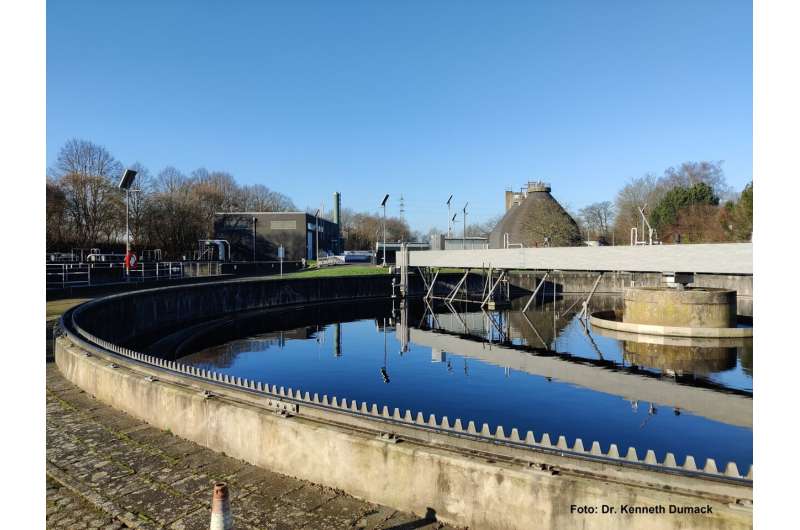This article has been reviewed according to Science X's editorial process and policies. Editors have highlighted the following attributes while ensuring the content's credibility:
fact-checked
trusted source
proofread
Microbial predators cause seasonal fluctuations in wastewater treatment, study shows

A community of microbial predators influences the composition of the bacterial community in wastewater. This explains seasonal variations in the microbial community that affect the efficiency of water treatment. This is the result of a study conducted by Nils Heck and PD Dr. Kenneth Dumack from the University of Cologne's Institute of Zoology. The study has been published, under the title "Microeukaryotic predators shape the wastewater microbiome," in the journal Water Research.
In wastewater treatment plants, a precisely coordinated interaction of different microorganisms takes place in order to effectively treat wastewater. However, a large part of the microorganisms involved in water treatment is still unknown. In addition to the beneficial bacteria that are responsible for purifying wastewater, many of their predators can also be found in the bioreactors. However, little is known so far about whether and to what extent these predators influence wastewater treatment.
Since the introduction of wastewater treatment plants, it has been known that the seasons influence the bacterial community in wastewater, and thus also the efficiency of water treatment. But why is this so? After all, bacteria do not possess an inbuilt sense of time.
This question is by no means trivial, as seasonal changes are the result of a variety of factors. The best-known factors are certainly temperature and light conditions. However, the chemical composition of the wastewater, precipitation amounts and many other factors also vary with the changes throughout the year.
So which of these factors causes the bacterial community to change over the seasons? PD Dr. Kenneth Dumack, the leader of the study, explained, "We found that seasonal variation in ambient temperature cannot explain the variation in the bacterial community. This surprised us, so we looked for another factor that could explain the variation in the bacterial community."
Nils Heck, first author of the study, added, "We found that the community of microbial predators, such as amoebae, ciliates and also rotifers, can explain the composition of the bacterial community to a certain extent. These predators are in turn dependent on the ambient temperature. Thus, the temperature factor represents an indirect influence on the bacteria through the community of predators."
The new findings contribute to a better understanding of the so-called "black box" of wastewater treatment in order to avoid, among other things, health risks that can arise from inadequately treated wastewater.
More information: Nils Heck et al, Microeukaryotic predators shape the wastewater microbiome, Water Research (2023). DOI: 10.1016/j.watres.2023.120293
Provided by University of Cologne
















